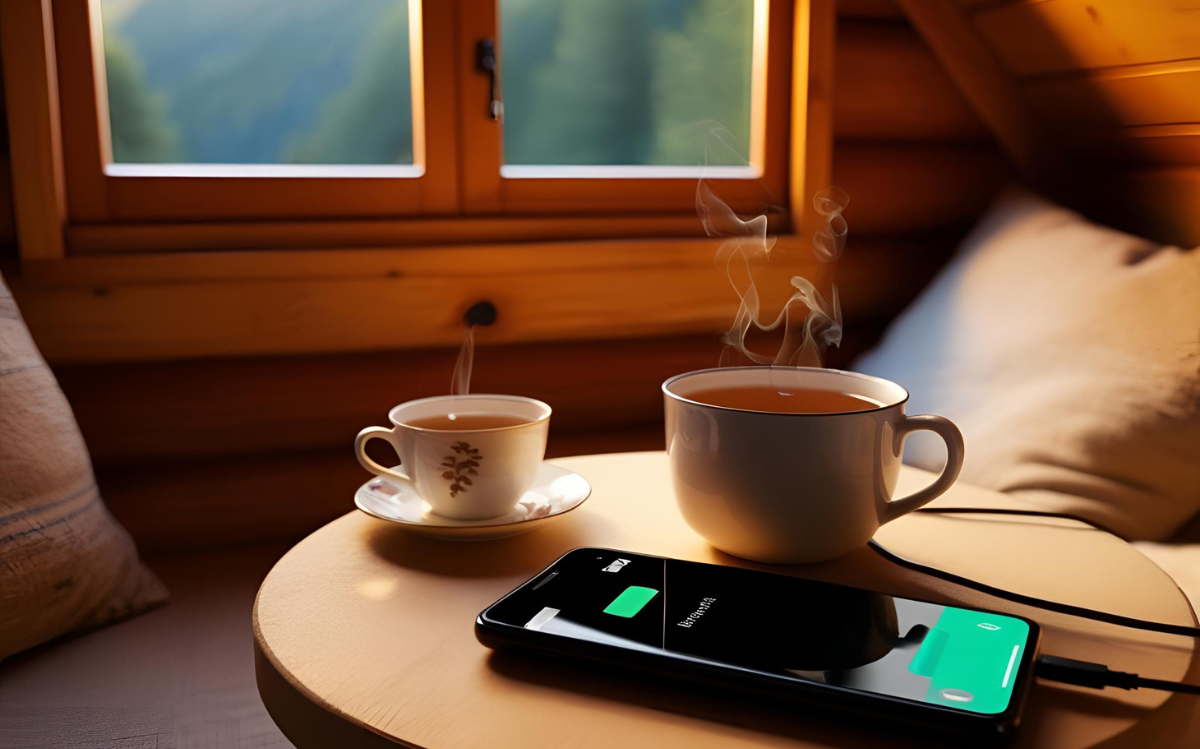Living on Tribal lands in Alaska presents real challenges for staying connected. We’ve felt the impact, especially regarding healthcare and family ties. The Lifeline program offers essential support, particularly enhanced benefits for Tribal lands. It provides us with free phones, discounted plans, and reduced connection fees that truly help our community.
To qualify, we must meet specific income guidelines and reside on Tribal land. Applying is straightforward, and the benefits can make a significant difference in our daily lives. If you’re looking to explore these options, keep reading to learn more about how to take advantage of these programs for ourselves.
Key Takeaways
- Lifeline offers enhanced monthly discounts up to $34.25 and up to $100 off connection fees specifically for Tribal lands in Alaska.
- Eligibility depends on household income (at or below 135% of Federal Poverty Guidelines) or participation in certain federal and Tribal assistance programs.
- Applying involves selecting a Lifeline provider, submitting proof of eligibility, and choosing a plan with or without a free phone.
Understanding Lifeline Benefits on Tribal Lands in Alaska
Overview of the Lifeline Program
Federal support for affordable communication services
We notice it every time we land in Bethel or Nome—our phones flicker, bars drop, and sometimes we just shrug because that’s normal out here. The Lifeline free phone Alaska program, though, isn’t some distant government idea.
It’s what keeps us connected when the rest of the world feels far away. This program, run by the feds, gives us a real shot at affordable mobile and internet service, which matters when you’re hours from the nearest city by bush plane.
We rely on this more than most realize. Communication means getting meds flown in, calling for help, or just checking in with family. Lifeline isn’t just a few dollars off; it’s up to $34.25 every month off our bill. That’s not pocket change, especially when groceries and gas cost double or triple what they do in Anchorage.
Enhanced benefits specific to Tribal lands in Alaska
Our experience shows the Tribal Lifeline program is stronger up here. On Tribal Lands, we get up to a $34.25 monthly discount—far more than the $9.25 most Americans receive. That difference really adds up.
We also help neighbors sign up for Link Up, which can chop $100 off the cost of setting up new service. That’s a big deal when you’re moving or just getting started. Providers usually let us stack these discounts, so if you qualify for one, you’re likely set for both.
This combo—monthly savings and setup help—makes the Tribal Lifeline program something we count on. Not flawless, but it keeps us from falling through the cracks.
Eligible Tribal Lands
Alaska Native regions under Alaska Native Claims Settlement Act
We’ve worked with families in places like Hooper Bay and Chevak, where a phone bill can eat up a paycheck. Thanks to the Alaska Native Claims Settlement Act (ANCSA), these villages are covered for Tribal Lifeline benefits.
ANCSA covers a lot—13 regional corporations, 200+ villages. We check addresses through the USAC portal, and most Alaska Native households qualify if they’re in or near these communities.
Other federally recognized Tribal areas and Indian allotments
It’s wider than just ANCSA. The Lifeline program also covers other federally recognized Tribal areas and Indian allotments. That’s important for folks living outside the main village, maybe on family land.
There’s some confusion here, so we double-check: “Tribal Lands” for Lifeline means all these places. Providers can confirm, or you can use the online tool.
Available Benefits
Free or discounted phone models and service plans
We’ve set up neighbors with phones that cost nothing upfront. Usually, it’s a basic smartphone, but some carriers let us bring our own if it works on their network.
Plans usually include:
- Unlimited talk and text
- About 11GB of data per month
- Sometimes extra perks like hotspot or rollover
We always tell folks:
- Look for local support (pop-up events help)
- Ask about data limits and throttling
- Keep your phone updated
Monthly discounts and Link Up connection help
The two main perks: the Lifeline monthly discount (up to $34.25 off) and Link Up (up to $100 off setup fees). We’ve seen monthly bills drop from $60 to $25—which frees up money for food or fuel. We’ve seen bills drop from $60 to $25, which means more money for food or fuel.
Our advice:
- Apply for both programs at once
- Use providers who know Alaska Native paperwork
- Keep your Tribal ID or BIA letter handy
Eligibility Criteria for Free Phone Programs
Income-Based Eligibility Thresholds
If your income’s low, there’s a good chance you qualify. For Alaska in 2024, the threshold is 135% of the Federal Poverty Guidelines. These aren’t numbers pulled from thin air—they’re adjusted to fit Alaska’s higher cost of living.
Here’s what it looks like:
- 1 person: $25,349
- 2 people: $34,479
- 3 people: $43,565
- 4 people: $52,650
- Add $9,086 per extra person
We always tell folks—if you’re even close to these limits, apply anyway. Sometimes your eligibility changes based on deductions or income type (like seasonal work).
Federal Assistance Programs qualifying for Lifeline
You also qualify automatically if you or someone in your household participates in certain federal aid programs. The list’s not short:
- SNAP (food stamps)
- Medicaid
- SSI
- FPHA (public housing)
- Veterans Pension or Survivor Benefits
We’ve helped elders on SSI get phones without paying a dime. We’ve also seen folks miss out just because they didn’t know their benefits counted.
Tribal-Specific Assistance Programs
Now, this is where a lot of Alaska Native families get in. If you’re on Tribal TANF or BIA General Assistance, you’re eligible. Same goes for:
- Food Distribution Program on Indian Reservations (FDPIR)
- Tribal Head Start (if income-qualified)
These programs were designed with Native communities in mind. That’s why the free phone eligibility for Tribal Lands is easier to meet if you’re already in one of these systems. No double-work, no extra forms. Just proof of participation.
What we always suggest:
- Keep all benefit letters in one place
- Call your provider to ask what documents they accept
- Renew your eligibility annually so there’s no gap in service
Application Process and Documentation Requirements
Credits: HealthWatch Winconsin
Selecting a Lifeline Service Provider
We started by picking a provider. You’d think they’d all be the same, but that’s not true out here on Alaska Native lands. Some providers had simpler sign-ups or better phone options than others. For example, one service shipped phones faster, while another worked better with limited internet.
It’s worth comparing providers to find what fits best for your village or area. Some folks in our village preferred some providers because the phones came faster, others because the site worked better in low bandwidth. The Tribal Lands free phone program isn’t one-size-fits-all—we learned that quick.
Before signing anything, we punched in our zip code right on the provider’s page. That saved us. Not every company actually covers every part of Tribal Lands in Alaska, even if they say they do. Not every provider listed online actually covers our part of Alaska, so we always double-check on official Lifeline portals or through Free Government Phone by State. So we double-checked.
Application Steps
When we applied, we had to choose: do we want a free phone with the plan or do we bring our own? For us, it made sense to take the free one (money’s tight and the phone they gave had solid features—camera, hotspot, even dual SIM). But some neighbors who already owned better phones used the bring-your-own-device option. That works too, so long as your phone’s unlocked and compatible.
Submitting proof of eligibility was the next step. We dug up our pay stubs from fish processing last season, and we also had an enrollment letter from the Tribal Head Start program for our niece. That was enough to qualify. You only need one of these:
- Income proof (under 135% of Federal Poverty Guidelines)
- Enrollment in SNAP, Medicaid, SSI, or
- Tribal programs like BIA General Assistance or TANF
We uploaded scans through the provider’s online form, but not everyone here has good internet. Some of us called their customer service and finished the process on the phone. Others mailed in copies—slow but it works. The Tribal Lifeline program makes sure even those without strong internet access can still apply and stay connected.
Approval and Receiving Service
It took about 9 days from start to finish. Once approved, they shipped out the phone. The package came right to our post office. Inside: the phone, SIM card, quick-start guide. The service was active within a few hours of setup.
We didn’t forget the Link Up benefit either. That took $100 off the connection cost, which really helped. If you’re setting up service at a new place, you definitely want that discount. That’s why free phone Alaska Native Link Up matters—it’s not just about the device. It’s about getting online affordably from the start.
Practical Considerations and Program Updates

Service Plan Features and Limitations
We’ve seen what these free plans really offer. Most free phone Alaska Native plans give us:
- Unlimited calls and texts
- About 8–11GB high-speed data
- Basic hotspot use
That’s enough for schoolwork, emails, and video calls with family. Streaming eats up data quick, so we save that for Wi-Fi. If we run out, extra data’s available, but it’s not always cheap.
Phone models depend on what’s in stock. Some of us got a Samsung, others a Blu View. Not fancy, but they work. If you care about the phone, ask before you sign up. Not every provider offers the same choices.
Impact of Program Changes
When the Affordable Connectivity Program ended in 2024, we felt it. That extra help for internet just disappeared. Lifeline’s now our main support. The Tribal Lifeline program fills the gap, but it’s not as generous.
Now, Lifeline’s what keeps us online for school and doctor visits. Our families depend on it, especially in the smaller villages.
Utilizing Benefits When Moving Residences
We move sometimes, and when we do, Link Up resets. New address, new $100 discount for setup. We called our provider after moving to Bethel, and they switched our address easy. Just remember to update your info every year or you’ll lose service. For us, this isn’t extra—it’s how we stay connected to what matters.
FAQ
Who can get a free phone through the Tribal Lifeline program in Alaska?
You can get a free phone Tribal Lands Alaska plan if you live on Tribal Lands and have a low income. The Tribal Lifeline program is for people in Alaska Native regions like villages or reservations. If you get help from government programs or don’t make much money, you may qualify. These free phone for low income Alaska programs help families stay in touch. You can get free phone assistance Tribal Lands offers without paying the full price for phone service.
What is the difference between the regular Lifeline and the Tribal Lands free phone program?
The Tribal Lands free phone program gives bigger discounts than the regular Lifeline free phone Alaska plan. If you live on Tribal Lands like Alaska Native reservations or communities, you may get more help. The program gives a larger free phone discount Tribal lands offer. This can cover free phone Alaska Native service like talk, text, and internet. If you’re part of an Alaska Native household, the Tribal Lifeline program might help more than the basic Lifeline plan.
What kind of phone services are included in the free phone Alaska Native program?
The free phone Alaska Native program usually gives you mobile service with talk and text. Many plans offer free phone Alaska Native unlimited talk or unlimited text. Some also give free phone Alaska Native unlimited data. These plans help Alaska Native tribes and communities stay connected. They come from the Tribal Lands free phone program. You may also get free phone Alaska Native broadband or internet. Most programs include wireless service that works in remote places.
How do I check my free phone eligibility Tribal Lands if I live in a Native village?
If you live in Alaska Native villages or reservations, you can check your free phone eligibility Tribal Lands by going online or asking your Tribal office. You may need to show you live on Tribal Lands and have low income. You can also qualify if you get help from a government program. To get free government phone Alaska support, you’ll need documents like benefit letters or tribal ID. These help prove you’re part of a free phone Alaska Native tribal program or service.
Conclusion
We’ve seen that the Lifeline program on Tribal lands in Alaska is more than just a small perk—it’s a lifeline. It helps families stay connected where phone service is often too expensive or hard to get. If you think you might be eligible, it’s worth looking into.
Staying connected can mean better access to jobs, school, healthcare, and loved ones. That’s something everyone should have. See if you qualify and apply here through Free Government Phone by State, a helpful directory that makes it easy to find what’s available where you live.


